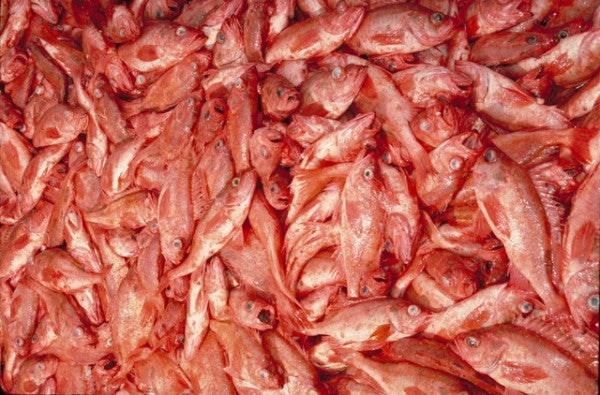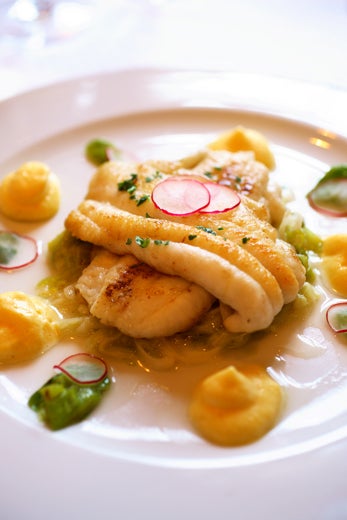[Re-posted with permission from National Geographic]
Last year I had the privilege of sharing some good news from the sustainable seafood world, that the Gulf of Mexico red snapper fishery had finally shed its perpetual red list status. Today I get to do something similar, by applauding the U.S. West Coast Groundfish IFQ Trawl Fishery for its landmark turnaround and the announcement by the Marine Stewardship Council (MSC) that they have certified 13 species to their standards for sustainable fishing.
In their announcement, MSC noted that the West Coast Groundfish IFQ Trawl Fishery is “the most diverse, complex fishery ever to enter assessment against the MSC standard anywhere in the world.” The fishery includes west coast favorites like sablefish and petrale sole, along with first-of-their-kind species in the MSC program like lingcod, thornyheads, and several varieties of Pacific rockfish.
The MSC’s 400-page Final Report highlights several strengths of the West Coast Groundfish Trawl Fishery, which include:
- The strong link between [stock] assessments and management actions
- The management plan establishes individual accountability on the part of fishermen and delivers more complete data for fishery managers
- Sensitive habitats are protected in areas of “essential fish habitat,” and additional areas deemed off-limits to bottom trawls
- The management system is transparent and open to the public
- The catch share program provides incentives for sustainable fishing
The fishery’s recent success can be traced back to a few factors. In 2011 the National Oceanic & Atmospheric Administration (NOAA) instituted a ‘catch share’ program, which was developed over several years by a broad range of stakeholders, including commercial fishermen, fishery managers, and the Environmental Defense Fund (EDF). (Full disclosure: I work for EDF.) At the same time, this new management plan established a system of 100 percent catch monitoring, which ensured that every fish that came over the rail was accounted for.
Taken together, and recognized by the MSC certification, these measures have drastically reduced bycatch (also known as unwanted or untargeted catch), limited the take of sensitive depleted species, and sparked innovation throughout the fishery. Even better, the changes apply to the entire trawl fishery in California, Oregon, and Washington, accounting for approximately 40 million pounds in landings in 2013.
If you’re not familiar with catch shares, they succeed by giving fishermen a financial stake in their fishery’s future in exchange for greater accountability. By doing so, fishermen avoid and can actually reverse the “tragedy of the commons,” in which too many boats chase—and inevitably over-harvest—steadily dwindling fish stocks.
Brad Pettinger, a lifelong fisherman and director of the Oregon Trawl Commission, coordinated the fishing industry’s effort to gain MSC certification. “West coast trawl fishermen are extremely proud to have met these stringent criteria for sustainability,” says Pettinger. “And with the unhurried fishing season that we have under catch shares, we’ve dramatically reduced bycatch.”
Bouncing Back From Disaster
Remembering a January 2000 federal disaster declaration in his fishery, Pettinger says, “Fifteen years ago they wrote the obituary for this fishery. Ten years ago we started working on a rationalized management plan, and three years ago we put it in place. That was the watershed moment, and now we’re demonstrating that we can be good stewards of an amazing public resource. We could not be happier or more proud.”
Shems Jud, who leads EDF Oceans’ Pacific team, has worked to rebuild Pacific groundfish stocks alongside fishermen like Pettinger for seven years. He believes that 100 percent monitoring is probably the single greatest change in the fishery, but one that does not come cheap.
Those federal observers cost hundreds of dollars a day and many west coast fishing businesses already operate on razor-thin margins. Still, what they gain with a federal observer is accountability, and in a seafood marketplace that increasingly rewards sustainable fishing practices, that can create market leverage.
Looking Forward
“MSC’s certification may assist in that respect,” continues Jud. “For the fishermen who have adapted to an entirely new management regime and increased operating costs, we are optimistic that this recognition will result in new and stronger market opportunities.”
To help keep operating costs in check, the Pacific Fishery Management Council is beginning a process that may one day replace human observers with electronic monitoring (EM) systems.
“That’s become a huge priority for us,” Jud added. “In order for this catch share program to endure and succeed, fishermen have to survive economically. EM may help reduce their costs and buy them just enough time so the benefits of the new program, such as MSC certification, catch up with their day-to-day business realities.”
So over the coming months we hope and expect that the seafood industry will embrace this fishery success story and amplify the hard work of west coast IFQ fishermen. And while it may take these fish a little time to make it into the inventories of markets and restaurants near you, I hope you’ll join me in seeking out these local, sustainable Pacific groundfish species when you buy seafood, because adding 40 million pounds of certified, sustainable product to the market is definitely a cause for celebration.











